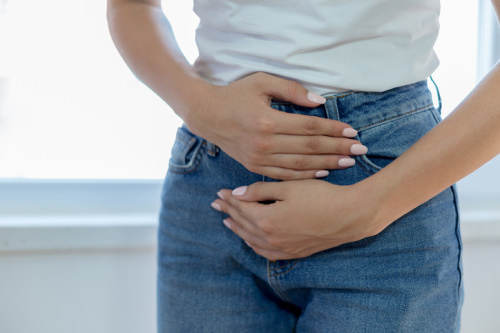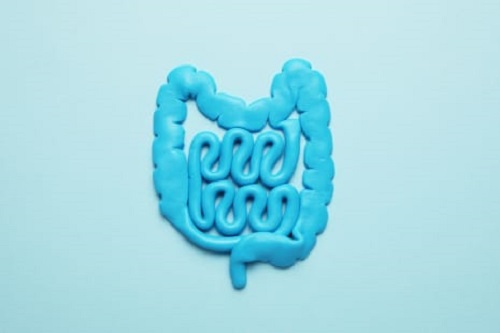Understanding constipation and laxatives
Constipation can happen for many reasons and commonly occurs when a stool passes through your body at a slower rate than normal.
The slower the food passes through the digestive tract, the more water will absorb into your colon. This results in less water in your stool, leaving you with harder stools than can be difficult and painful to pass.
Constipation can be caused by many lifestyle factors including dehydration, lack of fibre in the diet, certain medications, illness, lack of activity and age.
Some diseases such as diabetes, hyperthyroidism, IBD, celiac disease, multiple sclerosis and diverticulitis can increase the frequency of constipation. Additionally, 40% of pregnant women report constipation at least once during their pregnancy.
In most cases, constipation can be prevented by maintaining a healthy balance of diet, hydration and activity and will often resolve itself. Although, in other cases, laxative intervention may be needed, should your symptoms continue to exist after 2 – 3 days.
If you pass less than 3 stools a week, you may be constipated. Stomach pains, hard stools and excessive straining when passing a stool may be tell-tale signs that you have constipation.
There are various types of laxatives that come in liquid, tablet, enema and suppository form. Laxatives can be great to help move along stubborn stools but should never be used long-term. With so many products on the market, we can help you define which method of action is the best to keep your intestinal traction on the move.
Bulk-forming laxatives
These types of laxatives are more commonly known as fibre supplements and are often the first point of treatment for mild constipation that doesn’t see improvement with lifestyle changes. They are also one of the safest laxatives as they can be used long-term with little to no side effects, if used correctly. The most commonly found ingredient in this laxative is psyllium husk.
Bulk forming laxatives work by absorbing and holding water in the bowel, therefore increasing the amount of moisture in your stool which leads to stimulation of your bowel movement.
Individuals with chronic constipation or other bowel conditions will take regular fibre supplements such as Metamucil as a healthy prevention of hardened stools. These usually come in a flavoured powder or tablet form that can be ingested or mixed with water.
What’s next?
Should you require the addition of vitamins or supplements to your diet, you can shop a full range of supplements here.
Stool softeners
Stool softeners work gently on mild to moderate constipation by drawing water and fats directly into the stool and promote bowel movements.
These are an effective treatment for mild cases of constipation and are great for maintenance and prevention as they work over a longer period (sometimes a week) and do not have a stimulating effect such as other laxatives.
An effective time to take stool softeners is before bed, this allows your body to draw water into your stool overnight and upon waking, stimulate a bowel movement once upright.
Doctors may prescribe stool softeners such as Coloxyl after a major operation and alongside opioid pain medications. Common ingredients found in these types of laxatives are docusate, prunes, paraffin and flaxseed oils and are commonly produced in tablet or oil form.
Lubricant laxatives
Lubricant laxatives work by lubricating the intestines, bowel and stools for easier evacuation and are generally used for acute constipation management. They work by lubricating the intestine and help the passage of the stool by decreasing the amount of water the intestine absorbs by creating a barrier and prevent stools from drying out in their travels.
These are highly effective laxatives but must only be used short term. Some people report oily stools and leakage after use. These oils are commonly mixed with water or juice and ingested or some come pre-mixed in an emulsion such as Agarol.
Stimulant laxatives
Stimulant laxatives are the fastest acting laxatives, suppository and enema forms can start working in a short time frame of 5 – 10 minutes and oral tablet forms within 5 – 6 hours and are perfect for immediate relief. This type of laxative works by inducing bowel movements by increasing the contractions of your intestinal muscles.
These often come in tablet, suppository or enema forms and may be used in combination with stool softeners such as docusate e.g. Coloxyl with Senna. Commonly used ingredients are Senna compounds, castor oil and Bisacodyl which is in popular brand Dulcolax.
Although stimulant laxatives provide quicker relief than some other forms, they must never be used long term. Concern has been expressed that over-use of stimulant laxatives can damage nerves inside the colon which can lead to dilation of the colon.

Osmotic and Saline laxatives
Osmotic and Saline laxatives contain ingredients such as magnesium, sulphate, citrate or phosphate ions and work by drawing water from the body into the intestines, the water softens the stool and increases the pressure within the intestines. This causes intestinal contractions resulting in a softer bowel movement.
Osmotic laxatives are commonly used to prepare for colonoscopy procedures and can take effect in 6 hours, saline preparations sometimes working within 30 minutes. Osmotic and saline laxatives are usually prepared from soluble powder form and drank as a liquid, common brands found on the shelf include Movicol and Fleet.
It is important to stay well hydrated in order for these laxatives to work effectively and to prevent your body from dehydration.
Using Enema’s and Suppositories
Rectally administered enemas and suppositories are commonly used to cleanse and evacuate the rectum before surgery or childbirth, they are also used to relieve constipation and rectal faecal impaction. Some suppositories can contain stimulant laxatives such as Dulcolax.
Enemas and suppositories include Microlax, Dulcolax, Glycerol suppositories and Fleet Enema’s and fall under stimulant, lubricant and osmotic and saline laxatives. Enema’s and suppositories are intended for occasional use only and users are urged to carefully follow instructions specific to each individual product. It is always recommended to use these laxatives in your home as evacuation can happen in as quick as a few minutes to an hour.
Laxatives for Little Ones
Babies and Children have sensitive little tums, they can go through so many changes in short bursts of time. Breastfed babies are at a very low risk of constipation, but formula-fed babies can have a higher risk especially when adjusting to the right formula for them. Most healthy children over 2 years will occasionally experience constipation. If you are concerned about your child’s bowel movements, always consult your doctor or pharmacist if you think your child’s condition may be worsening and ask advice before proceeding with a treatment. Laxatives such as Movicol Junior and Parachoc are commonly used for mild to moderate constipation treatments as well as infant glycerol suppositories.
Always make sure to consult your healthcare professional before proceeding with laxative treatment to ensure that you get the right treatment for you, especially if you suffer from a health condition.
More health advice
View our wide range of health advice, tips and recommendations by visiting our health articles or checking out our top health articles below.

Vitamin D: A practical guide
One of the most important vitamins that our body needs to stay healthy is vitamin D. What’s even better is that it’s available for free from the sun!

Maintaining Healthy Bowel Habits
However, many people experience great difficulty passing a bowel motion and spend a lot of time sitting on the toilet with a very unsatisfactory result.

Understanding Constipation & Laxatives
The slower the food passes through the digestive tract, the more water will absorb into your colon. This results in less water in your stool.
